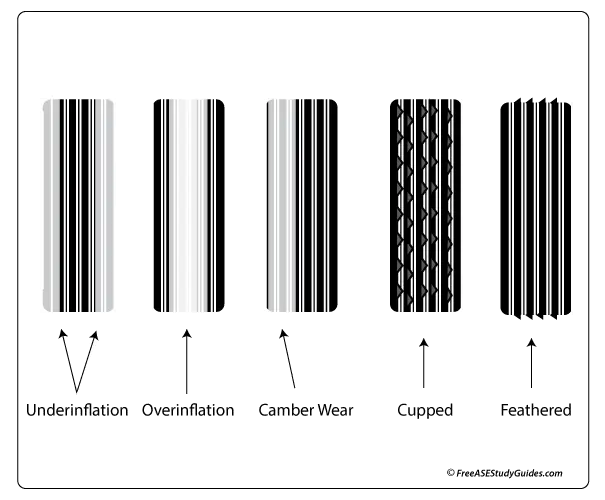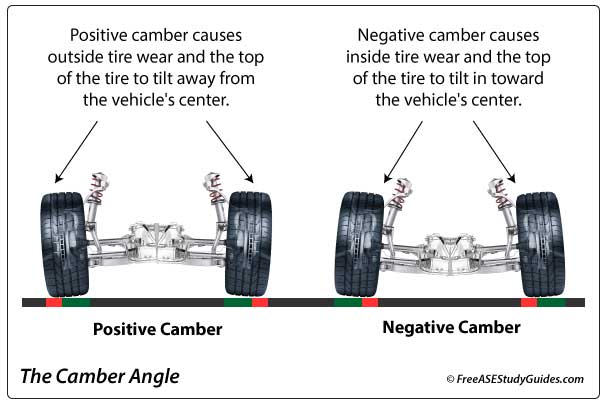Tire Tread Wear Patterns

Outside Edges: Underinflated tires wear on the shoulders or outside edges. There is insufficient contact with the center and excessive contact with the outer edges of the tire and the road surface as the vehicle travels down the road.
Center of tire: Overinflated tires wear in the center from the excessive contact with the tire's center and the road surface. Always use a tire air pressure gauge when inflating tires.

One of the edges: When only one shoulder of the tire shows wear, the camber angle is off, either negative or positive.

Cupped tires: When a tire is scalloped or cupped across the tread, it usually indicates bad shocks, struts, or out-of-balance tires. Perform a bounce test to see if it oscillates and test drive the vehicle to see if it floats and leans excessively around corners. Tire wear can indicate a worn steering or suspension component, improper tire pressure, or a misaligned vehicle.

Tire is feathered: Typically, when the tire has a feathered tread, the tie rods are loose, or the vehicle needs to be aligned. The tie rod ball studs get loose in their sockets, allowing the tires to toe in/out as the vehicle travels down the road. Toe-in is when the fronts of the tires are closer together than the rears, and toe-out is when the fronts of the tires are further apart than the rears.